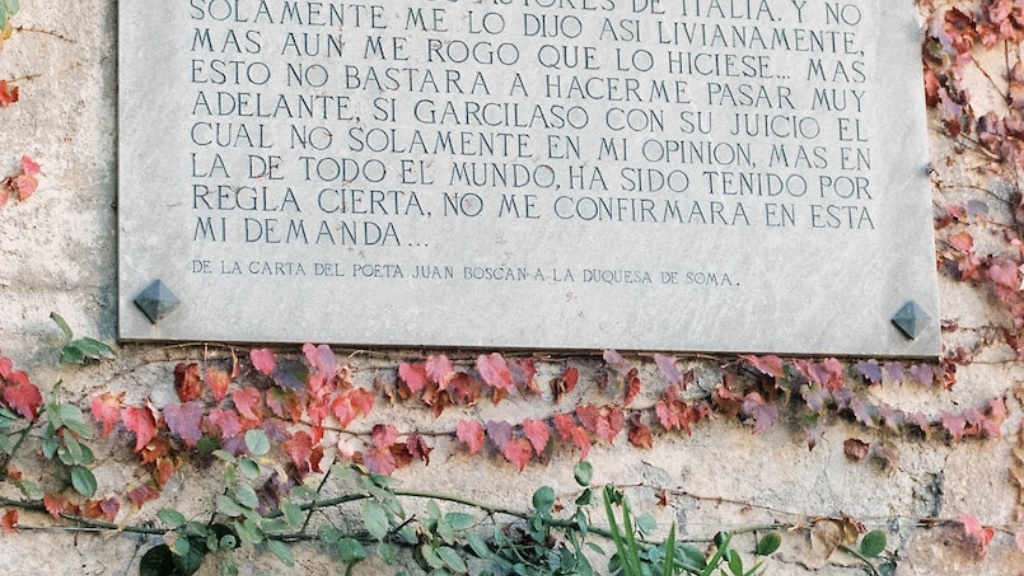The poem, “A Noiseless Patient Spider”, by Walt Whitman is arguably one of the most intuitive works published by the American poet. This poem was published within his collection Leaves of Grass in 1855, being one of the pieces that absolutely made him popular as a poet and writer. The poem is written in the format of American Transcendentalism, as it is a reflective and meditative piece in nature.
Themes found within this piece include dedication, understanding, and isolation. These themes are masterfully represented in various ways, the most notable being depicting a spider, in the absence of a web, exploring the permanence of its surroundings. This spider is also presented within a sense of solitude, as the presence of soundlessness found within this piece allows the spider, and in correlation to readers, to feel a sense of inner peace and understanding. By using repetition, the idea of exploration is enhanced, as each time the repetition is found the idea that traversing is taking place increases.
The composition of the poem is very freeform and uses important techniques, such as fragmentation. This fragmentation allows additional insight into the thoughts of the writer; for instance, not forming complete sentences creates a sense of haste in the poem. This technique of fragmentation then, inversely, amplifies the sentiment felt when complete sentences are formed, such as “it launch’d forth filament, filament, filament out of itself.” In addition, other techniques such as imagery, assonance, and enjambment are used to realize the theme of exploration and at the same time the themes of understanding, dedication, and isolation.
The imagery found in the poem utilizes vivid descriptions and metaphors, particularly that of the spider. The spider creates a certain picture in the reader’s imagination, as it is described as something that is moving through its environment and searching, yearning for companionship. By using images, the reader can really empathize with the spider, or view the example of it within him or her as he or she goes throughout his or her journey.
Whitman also employs assonance in this poem, which was a very popular technique used by Transcendentalist’s such as himself. Assonance is found across the poem, precisely in words such as “spider,” “silently,” and “except.” These words, which overlap in sound, create an emphasis on the words which intensify the feeling of isolation and exploration contained within the poem. Through this, the connections between the words, being mindful of the images, and appreciation for the metaphorical events occur within the reader`s mind.
Finally, the poem is filled with enjambment throughout its composition. This technique, which is found in the transition of each line of the poem, places an emphasis on the exploration the spider is going through, as the transition of each line within a stanza allows the poem to transition its flow while making connections of the ideas and images within the poem.
Symbolism
The symbolism within “A Noiseless Patient Spider” contains a variety of meanings, but the most prominent one being exploration and the search for knowledge. This is found with the spider, who is “patiently” exploring its environment without uttering a sound, just as a person doing reflective meditation. It is through this reflective meditation where individual can break away from their own troubles, as well as have a chance to reflect on the environment they are surrounded with.
The poem is also deeply rooted in faith, particularly faith in a higher power. When the spider was established “on a little promontory”, the spider gives the sense of a presence not of the physical world, but of an ethereal presence. It is through this higher presence where the purpose for exploration is revealed, as well as the idea that with faith one can reach various heights and understanding.
The other thought found within the poem is the idea of optimism. Even though the poem depicts the spider in total isolation, this is not seen as a negative, but something of a state in order to both understand oneself and the environment. Even in this state of seclusion, the spider does not give in to despair, but keeps on with its exploration in hopes of finding understanding and faith.
Metaphorical Analysis
The spider as a metaphor is a very rich image, and in this poem starts off with a perception of conflict. On one side, the spider is seen trying to launch a web, and on the other side, the spider is without any form of rope or thread that can render his idea of exploration to the physical world. This creates a sensation of the spider being in a battle between his own ambitions and the shortcomings of physical reality – but the spider never gives in.
The spider in this particular poem serves as a representation of what happens during reflection, as it encompasses all of the elements found within the poem including optimism and faith in a higher power. Despite being by himself, there is a sensation of hope felt in the form of exploration as the spider (and the individual) look for knowledge, understanding, and faith in a higher power. This sense of exploration ties all of the elements found within the poem together, as the spider determines the strength of his own will.
Research Connections
The poem can easily be tied into the works of many other authors, both through Whitman’s timeless nature in delivering it and the ideas expressed within it. One of the most notable connections is to Ralph Waldo Emerson, as both Whitman and Emerson were deeply rooted in the ideas of American Transcendentalism. The concepts of faith, exploration, and optimism are all tied to Emerson’s works, as well as the underlying search for a better understanding of self in relation to the environment, which are all found in “A Noiseless Patient Spider”.
In addition to this, Whitman’s poem can easily be tied to a variety of world religions, particularly that of Buddhism. The spider’s exploration of his environment fits in the concept of interconnectedness and karmic patterns, as well as attempting to reach a state of understanding through meditative techniques and understanding of the core of who one is.
Connection to Modern Society
The poem can easily be related to modern society, particularly in how each individual has to “search” for his or her true destiny. It is through self-reflection and exploration that this can be done, as it is often the unseen aspects of one’s personal life that make all of the difference. This poem is an excellent reference for this, as Whitman attempts to explain the drive that one needs to have in order to find his or her place in the world.
This poem can be easily related to the often heard idea that “God is inside of us”. Within this poem, the spider moves through the environment in exploration of knowledge, understanding, and faith in a higher power, which is a sentiment shared by many individuals regardless of religious beliefs. The idea of faith is a prominent element found in this poem, as well as the previous works of the poet, which is seen as the driving factor of one’s destiny and ultimate understanding of oneself and the environment around him or her.
Whitman’s poem serves as an excellent reference point for how society can adapt to different changes and remain content, as well as how humans often reflect on their lives when presented with a situation that pushes them to the limit. The poem gives a new perspective on how one should handle difficult situations, particularly ones that contain a sense of seclusion and discomfort.
Educational Connections
This poem is an excellent reference point for discussing themes of Transcendentalism in literature and the ideas of exploration and faith. Particularly, the poem can serve as an example when discussing how modern literature was documented, such as how many of the works of authors like Whitman use techniques such as fragmentation, assonance, and enjambment to move a story forward. The poem can easily be discussed as an example of self-exploration and how powerful themes of self-discovery were documented by Whitman.
In terms of discussing faith in classrooms, this poem can easily be used as a reference point for how faith can be seen in various forms, particularly in its presence within the poem. As faith is often a difficult element to discuss due to the varying levels that each person has, this poem can easily be seen as a base off of which faith can be discussed and explored within students.
Finally, this poem can be used as an example of optimism found in literature. Although the poem initially gives off a sense of seclusion and discomfort, the underlying theme of optimism is felt as the search for knowledge and understanding is made by the spider, who is never discouraged or deterred by a lack of thread or rope, but instead keeps on exploring despite being alone. Through this optimism, the poem gives off a sense of hope, which is a powerful message for those in classrooms discussing literature.




